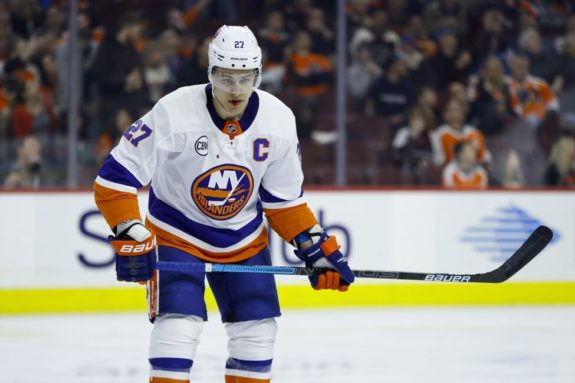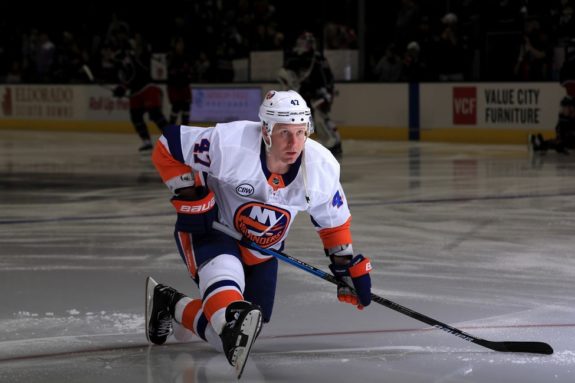The New York Islanders had the fifth-most points in the NHL in the 2018-19 season, but they could easily find themselves on the outside looking in after 2019-20. After an underwhelming free agency that saw them add no real outside help, the Islanders have set themselves up for a potentially significant decline in standings points. Simply put, the Islanders overachieved based on their actual play in 2018-19 and aren’t likely to repeat their 105-point performance.
Though they ranked high in points, there was little to be impressed with. They ranked 29th out of 31 on the power-play and were an average penalty-killing team. They ranked 22nd in goals for and had the third-fewest shots for.
At 5-on-5 they held the sixth-worst Corsi-For percentage, failing to control the shot attempts with only 47.85% in their favor. They also gave up over 50% of scoring chances over the course of the season. These are not rankings you would expect from a team that finished fifth in the entire league.

So, why does any of this matter when it comes to 2019-20? The Islanders managed to stay away from any meaningful transactions. For a team that made the playoffs riding an unworldly goaltending performance, failing to make impact additions should have been a fireable offense.
The Islanders Are Almost the Same
There were 43 goaltenders who played at least 1500 minutes at 5-on-5 last season. Two of those 43 were members of the New York Islanders. Thomas Greiss ranked second with a .939 save percentage and Robin Lehner ranked fifth with .935 SV%.
Lehner is in Chicago, and Greiss is unlikely to repeat such a high percentage (a 5-on-5 career-high at age 33). Semyon Varlamov ranked 26th out of 43 in save percentage at .919. A .919 save percentage isn’t going to generate 48 wins if the play in front of the Islanders net repeats itself.
Nick Leddy was one of the least effective defenders in the league last season and Johnny Boychuk wasn’t far behind him. They had the seventh and eighth, respectively, worst Corsi-against-per-60 numbers at 5-on-5 (min 700 minutes), relative to the team, amongst defensemen.
In Leddy’s case, he had a negative impact on shot generation as well. The Islanders’ most-used defender, Ryan Pulock, was much better defensively than both of the previously mentioned players, but he also struggled to generate much offense.

The forward group is equally as underwhelming. The Islanders had 10 forwards (still on the roster) play at least 700 minutes at 5-on-5 last season. The bottom three players (Czikas, Martin and Komarov) in shot attempt share make a combined $8.85 million.
Actively knowing this, Lou Lamoriello still decided to hand out a combined $13 million more per season on the cap to Anders Lee and Brock Nelson for the next seven and six years, respectively. Nelson generates little to no offense and is below average defensively. Lee, while less gifted defensively, does actively contribute to generating offense.
What’s more important than them being overpaid is that all five of these players have likely already hit their ceilings, so there shouldn’t be much more expected other than what has already been seen. Unfortunately for the Islanders, what’s been seen already – collectively – just won’t be enough when the goaltending performances become average.
In all of this, Mathew Barzal is the exception for what’s considered their top group. He’s an elite forward that will make Islanders fans happy for many years to come, but right now he’s alone on that pedestal. The Islanders have created fool’s gold expectations for their current roster and could find themselves on a long road back to a top-ten finish.
*all stats via Natural Stat Trick